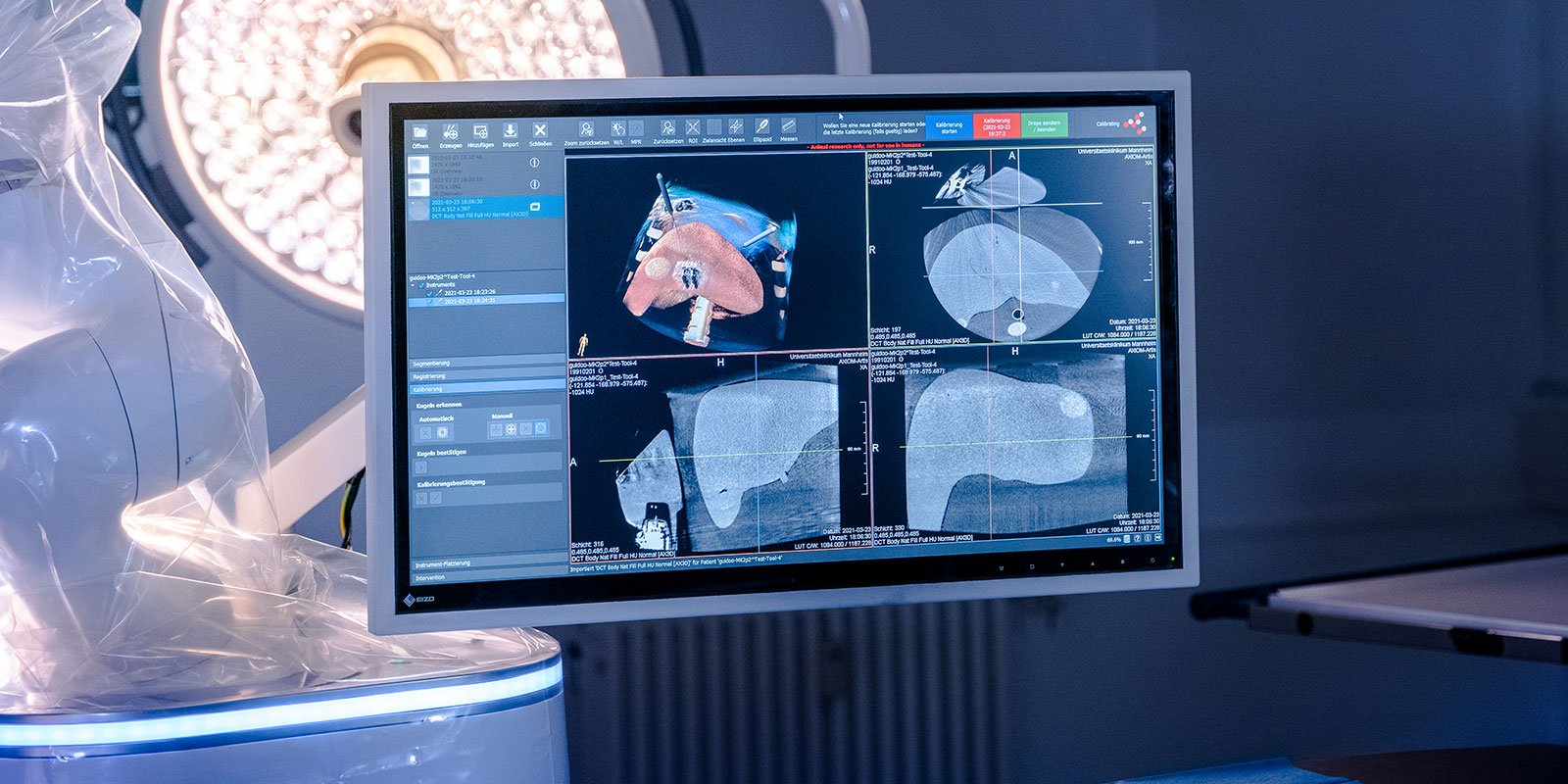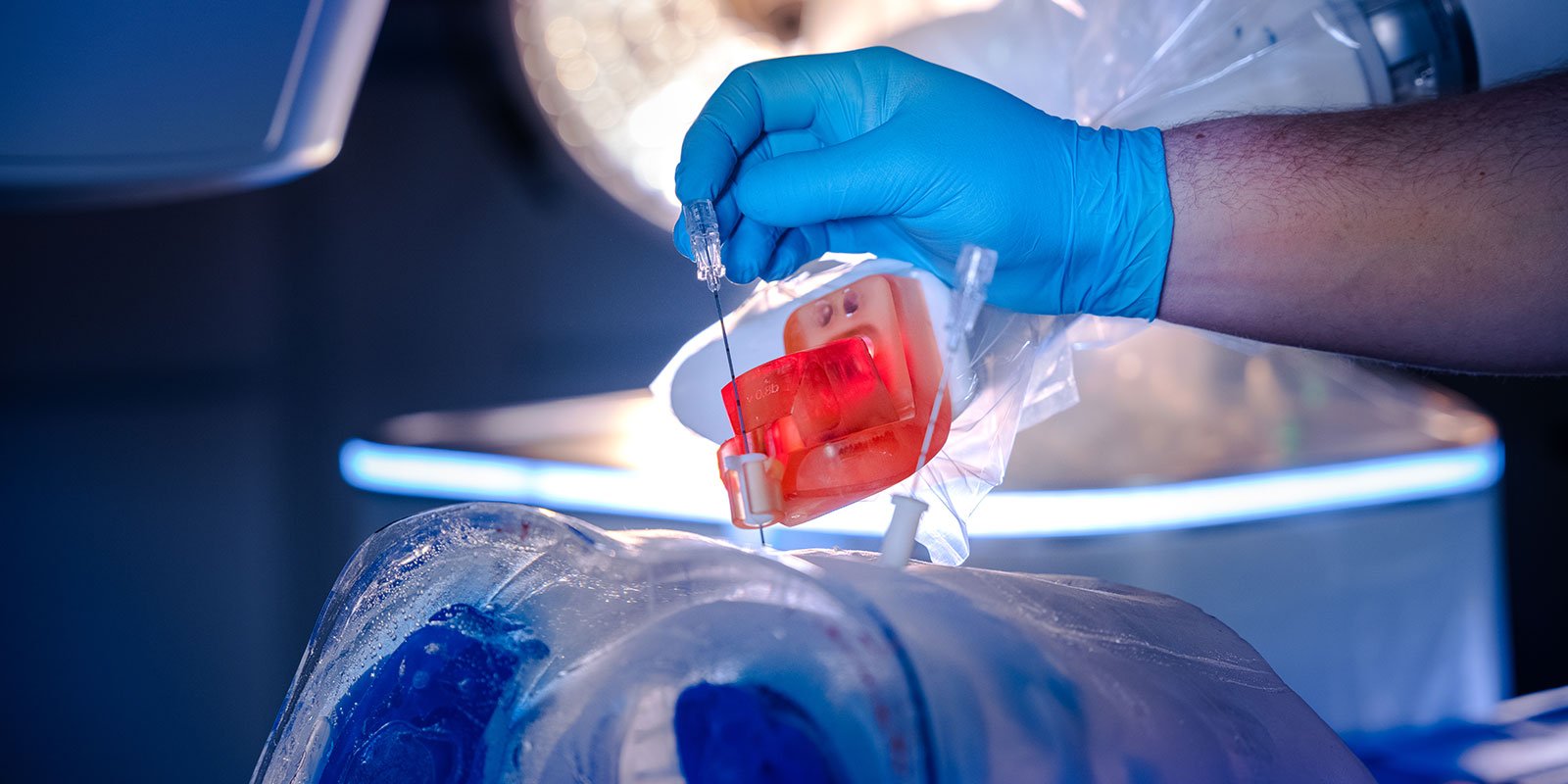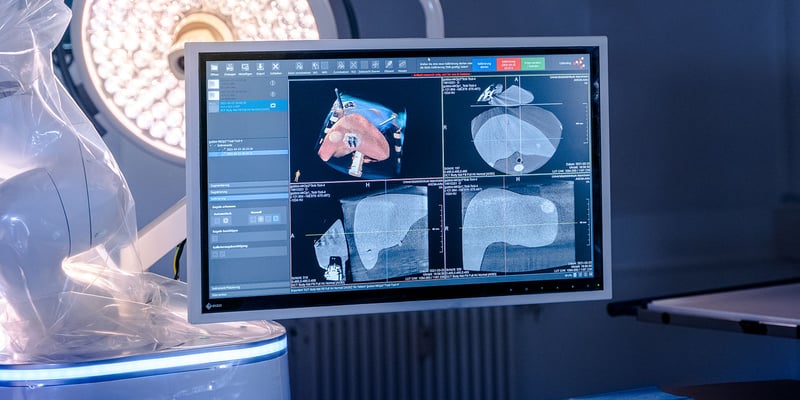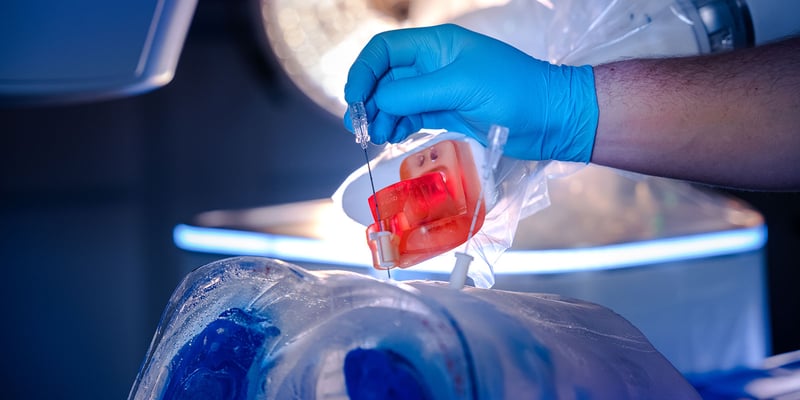guidoo
Let guidoo guide you
The robotic surgical assistant
guidoo shows its strengths in percutaneous biopsies and ablative procedures. In the operating room, the system supports the positioning of interventional needles.
The combination of robot precision and medical expertise simplifies complex procedures and reduces iterations.
The system has a state-of-the-art accuracy rate, thereby reducing control scans and saving time. Tests show that guidoo gives a high level of confidence when placing needles, improving the success of the procedure.1




Why? guidoo convinces by...
Speed¹
- Needle placement times in less than 20 minutes from the start of the planning/calibration scan to the control scan.
- This pays off quickly, especially for interventions with multiple needles or extreme insertion angles.
Precision
- Reliable navigation and positioning based on imaging data.1
- Very high path fidelity of the planned trajectory, virtually without angular adjustments - minimizing collateral tissue damage.2
- The guidoo system provides a state-of-the-art accuracy. 1
Simplicity
- During a biopsy, guidoo's robotic arm guides the needle sleeve to the planned puncture site.
- Incidentally, tests show that guidoo brings high level of confidence when placing needles, improving the success of the procedure.1
What's new?
First-in-Human-Study started
guidoo @ Stimulate
Current project? Contact us.
Contact1 Lautenschlaeger P, Rathmann N, et al. Learning Needle Placement in Soft Tissue With Robot-assisted Navigation. In Vivo. 2023 Mar-Apr;37(2):702-708. doi: 10.21873/invivo.13131. PMID: 36881085; PMCID: PMC10026658.
2 guidoo is tested vigorously for placement and superimposition accuracy with each installation.